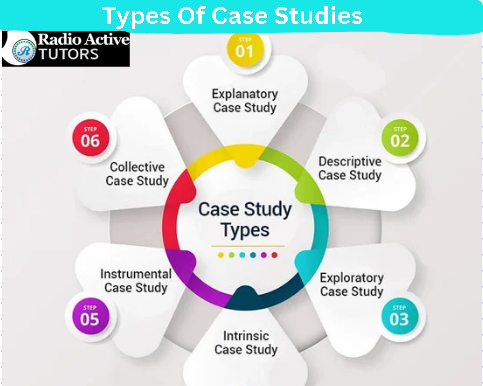Introduction
A case study is a powerful research method that enables in-depth exploration and analysis of real-life situations, events, or individuals. Whether you are a student, a researcher, or a professional, learning how to write a case study is essential for effectively communicating findings and insights. In this comprehensive guide, we will walk you through the step-by-step process of creating a compelling and informative case study. From selecting a suitable topic to presenting your conclusions, we will cover every aspect of case study writing to help you master this valuable research and communication skill.
I. Choosing the Right Topic
Selecting an appropriate and engaging topic is the first crucial step in case study writing. Consider the following when choosing your subject:
Relevance: Ensure your topic is relevant to your field of study or research objectives.
Significance: Choose a case that offers valuable insights or addresses a meaningful issue.
Interest: Pick a topic that genuinely interests you, as this enthusiasm will reflect in your writing.
II. Define Your Purpose
Determine the specific purpose of your case study. Are you aiming to analyze a problem, explore a unique phenomenon, or provide practical solutions? Clarifying your purpose will guide your research and writing process.
III. Research and Data Collection
Thorough research and data collection are essential to build a solid foundation for your case study. Utilize a mix of primary and secondary sources, such as interviews, surveys, observations, and existing literature. Maintain meticulous records of your sources and data.
IV. Structure Your Case Study
Create a clear and organized structure for your case study. A typical structure includes the following sections:
Introduction: Introduce the topic, the case, and the purpose of the study.
Background: Provide context and relevant information about the case.
Methodology: Explain your research methods and data collection techniques.
Findings: Present the collected data and your analysis.
Discussion: Analyze the data, discuss key points, and draw conclusions.
Conclusion: Summarize the main findings and their implications.

V. Writing the Introduction
The introduction sets the stage for your case study. Begin with a compelling hook to engage readers. Clearly state the research question or objectives and provide a brief overview of the case and its significance.
VI. Providing Background Information
In the background section, offer context and background information about the case. Describe relevant historical, social, or environmental factors that impact the case. Ensure that readers gain a clear understanding of the case's setting.
VII. Methodology
Detail the research methods and data collection techniques used in your case study. Explain why you chose these methods and how they were applied. Provide transparency regarding data collection and analysis processes.
VIII. Presenting Findings
In this section, present the data you collected during your research. Use tables, charts, graphs, and narratives to illustrate key points. Ensure that your findings align with the research question and objectives.
IX. Analyzing and Discussing Findings
In the discussion section, critically analyze and interpret the findings. Discuss the implications of your findings within the broader context of your field. Address any limitations or challenges encountered during your research.
X. Drawing Conclusions
Summarize the main conclusions drawn from your case study. Revisit the research question and objectives, and reiterate the significance of your findings. Avoid introducing new information in the conclusion.
XI. Recommendations
If applicable, provide practical recommendations or solutions based on your findings. Offer insights on how the information can be applied in real-world situations.
XII. Citing Sources
Ensure that you properly cite all sources and references used in your case study. Follow a recognized citation style (e.g., APA, MLA) consistently throughout your document.
XIII. Proofreading and Editing
Thoroughly proofread and edit your case study to eliminate grammatical errors, typos, and inconsistencies. Pay attention to clarity, coherence, and overall readability.
XIV. Appendices and Supplementary Materials
Include any supplementary materials, such as interview transcripts, survey questionnaires, or additional data tables, in appendices. Reference these materials in the main text as needed.

Conclusion
Writing a case study is a skill that requires careful planning, research, and effective communication. By following this comprehensive guide, you can create a compelling and informative case study that contributes valuable insights to your field of study or research area. Mastering the art of case study writing opens doors to effective storytelling and impactful knowledge dissemination.
Types of Case Study
Case studies come in various types, each serving different purposes and research objectives. Here are some common types of case studies:

Descriptive Case Studies:
Purpose: To provide a detailed and comprehensive description of a specific case, event, or phenomenon.
Focus: Focuses on understanding and documenting the case's characteristics, context, and history.
Use: Often used in exploratory research to lay the groundwork for further investigation.
Explanatory Case Studies:
Purpose: To explain why and how a particular event or phenomenon occurred.
Focus: Aims to uncover causal relationships and underlying mechanisms.
Use: Helps researchers gain insights into the causes and effects of a specific case.
Exploratory Case Studies:
Purpose: To explore a new or unfamiliar topic with limited existing knowledge.
Focus: Emphasizes generating hypotheses and identifying key variables or factors.
Use: Often used at the early stages of research to explore a subject in-depth and guide future studies.
Intrinsic Case Studies:
Purpose: To study a case for its inherent interest and value, regardless of its generalizability.
Focus: The case itself is of primary interest, not its applicability to other situations.
Use: Common in fields like history or literature where the case is unique or exceptional.
Instrumental Case Studies:
Purpose: To use the case as a means to investigate a broader issue or theory.
Focus: The case serves as a tool or instrument to explore a larger research question.
Use: Often used in social sciences to gain insights into broader social, political, or economic issues.
Multiple Case Studies (Comparative Case Studies):
Purpose: To compare and contrast two or more cases to draw insights, patterns, or generalizations.
Focus: Involves the analysis of multiple cases to identify similarities and differences.
Use: Helps researchers generalize findings or theories across multiple contexts.
Longitudinal Case Studies:
Purpose: To study a case or phenomenon over an extended period, tracking changes and developments.
Focus: Captures how the case evolves and changes over time.
Use: Valuable for understanding the dynamics of ongoing processes or interventions.
Critical Instance Case Studies:
Purpose: To examine an unusual or critical instance that challenges or contradicts existing theories or norms.
Focus: Investigates an outlier case to shed light on its uniqueness.
Use: Useful for identifying limitations in existing theories or paradigms.
Cumulative Case Studies:
Purpose: To compile information from multiple past case studies to build a broader body of knowledge.
Focus: Gathers findings from previously conducted case studies to form a cumulative understanding.
Use: Often used in literature reviews or meta-analyses to synthesize existing research.

Prospective Case Studies:
Purpose: To study a case as it unfolds in real-time, often with a focus on future outcomes.
Focus: Involves on-going data collection and analysis of events as they happen.
Use: Valuable for assessing the impact of interventions, policies, or projects as they are implemented.
These types of case studies can be applied across various disciplines, including social sciences, business, healthcare, education, and more. The choice of the type of case study depends on the research objectives, the level of detail required, and the specific context of the study. Researchers select the type that best suits their research questions and goals.
